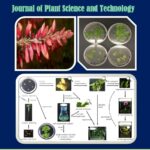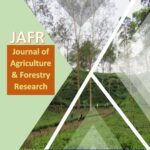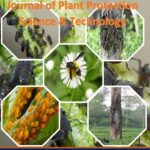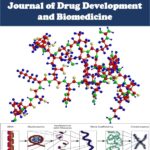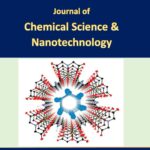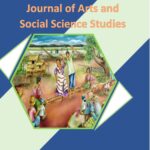Authors are advised to go through these ethics firmly, as mentioned here under:
- Submitted manuscripts should contain original and authentic results, data and their ideas, which are not published elsewhere.
- Authors should not submit the same manuscript in another journals.
- Preparing of data and results, intellectual property theft and plagiarism are highly unacceptable, it is beyond the ethics of an author. Information obtained from various media can be provided in the manuscript only with prior permission from the owner of the source of information or data.
- Authors should properly cite the work they are referring, authors are advised to cross check the reference before submission of manuscript that it has all the contents that a manuscript should have.
- Authors and co-authors are requested to review and ensure the accuracy and validity of all the results prior to submission. Any potential conflict of interest should be informed to the editor in advance.
- All authors are requested to submit the copyright transfer form when the manuscript is submitted.
- When human experimentation is being reported, a statement must be included confirming that the work was done in accordance with the appropriate institutional review body and carried out with the ethical standards.
- Manuscript should include a signed statement of informed consent to publish (in online) patient descriptions, photographs, and pedigrees from all persons (parents or legal guardians for minors) who can be identified in such written descriptions, photographs, or pedigrees. Such persons should be shown the manuscript before its submission.
- Sharing with public media, government agencies, or manufacturers the scientific information described in a paper or a letter to the editor that has been accepted but not yet published violates the policies of many journals.
Article acceptance requirements
The criteria for an article to be accepted for publication include:
- The article should be original writing that enhances the existing body of knowledge in the given subject area. Original review articles and surveys are acceptable, even if new data/concepts are not presented.
- Results reported have not been submitted or published elsewhere (although expanded versions of conference publications are eligible for submission).
- Experiments, statistics, and other analyses are performed to a high technical standard and are described in sufficient detail.
- Conclusions are presented in an appropriate fashion and are supported by the data.
- The article is presented in an intelligible fashion and is written in Standard English.
- Appropriate references to related prior published works must be included.
Manuscript Types acceptable for peer review
Regular – This is a classic research article that has a hypothesis, investigation, solution, model, physical experiment and/or simulation and a result that is of value to the community within that area of expertise
Topical review – This is a review of an emerging area within the journal’s scope that performs a technical and critical review of other articles. Calculations are performed and conclusions are drawn on the strengths and weaknesses. The conclusion can also discuss future challenges.
Theory – This is a scholarly article that uses mathematical methods to develop new theoretical results of importance to the field.
Survey – A survey article analyzes, summarizes, systemizes, and presents fresh conclusions from a large number of recently published scholarly articles.
Perspective – This category of article is an in-depth viewpoint article intended to bring together a big picture in a fast-evolving landscape of technological development. It will typically be a topic where there is community uncertainty and/or disagreement. Publishing perspective articles will allow more technical discussion. This category of article will typically be written by a leading authority in an area.
Applied research – This article describes challenges and practical solutions for topics within the journal’s scope. Quantitative results for validation of the approach are expected.
Negative result – This is a non-trivial theoretical or experimental negative or null result that does not support a hypothesis. Provided that the research question posed is meaningful and the study is rigorously conducted, this type of article has value to the engineering community.
Methods – This article will report the development of new or improved fabrication or manufacturing technique, or a new experimental, measurement or mathematical technique. Applied research articles focus on practical systems, while here the focus is on methods.
Standards – This article summarizes and expounds new or revised SARPO standards. This can also be a scholarly discussion paper for new SARPO standards or a critique of existing SARPO standards with recommendations.
Comment – This is an article that comments on another published article. A comment points out a technical error, oversight, or presents an opposing position. It is a critique, providing corrections, and performs analyses.
Reply – A reply article is submitted by the authors of a published paper in response to a Comment article.
Avoid Plagiarism and duplicate publication
- Each article submitted to SARPO Journals is scanned for plagiarism, including similarity to an author’s own work. Article submissions that plagiarize another author’s work will be rejected. SARPO accepts expanded versions of an author’s own referenced conference articles, as long as the similarity is less than 35%. If the overlap is higher (effectively duplicate publication) or the source article is not referenced, the article will be rejected.
- Reuse of an author’s own thesis or dissertation is allowed, as long as it is cited and has not been published elsewhere.
- Preprints of authors’ articles to their own web site, their employer’s site, or to another server that invites constructive comment from colleagues and provides a publication time stamp are allowed. Upon submission of an article to SARPO journals, an author is required to transfer copyright in the article to SARPO, and the author must update any previously posted version of the article with a prominently displayed SARPO copyright notice. Upon publication of an article by the SARPO, the author must replace any previously posted electronic versions of the article with either (1) the full citation to the SARPO work with a Digital Object Identifier (DOI), or (2) the accepted version only with the DOI (not the SARPO-published version). Articles submitted to SARPO journals should not be under consideration for peer review at any other journal (simultaneous submission).


